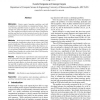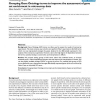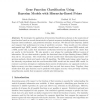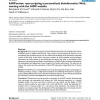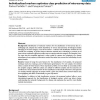BMCBI
2006
13 years 11 months ago
2006
Motivation Protein remote homology prediction and fold recognition are central problems in computational biology. Supervised learning algorithms based on support vector machines a...
BMCBI
2006
13 years 11 months ago
2006
Background: The biological interpretation of large-scale gene expression data is one of the paramount challenges in current bioinformatics. In particular, placing the results in t...
BMCBI
2006
13 years 11 months ago
2006
Background: Gene Ontology (GO) terms are often used to assess the results of microarray experiments. The most common way to do this is to perform Fisher's exact tests to find...
BMCBI
2006
13 years 11 months ago
2006
We investigate the application of hierarchical classification schemes to the annotation of gene function based on several characteristics of protein sequences including phylogenic ...
BMCBI
2006
13 years 11 months ago
2006
Background: User-scripts are programs stored in Web browsers that can manipulate the content of websites prior to display in the browser. They provide a novel mechanism by which u...
BMCBI
2006
13 years 11 months ago
2006
Background: Numerous feature selection methods have been applied to the identification of differentially expressed genes in microarray data. These include simple fold change, clas...
BMCBI
2006
13 years 11 months ago
2006
Background: Identification of molecular markers for the classification of microarray data is a challenging task. Despite the evident dissimilarity in various characteristics of bi...
BMCBI
2006
13 years 11 months ago
2006
Background: The accuracy of protein secondary structure prediction has steadily improved over the past 30 years. Now many secondary structure prediction methods routinely achieve ...
BMCBI
2006
13 years 11 months ago
2006
Background: Genome sequences vary strongly in their repetitiveness and the causes for this are still debated. Here we propose a novel measure of genome repetitiveness, the index o...
BMCBI
2006
13 years 11 months ago
2006
Background: ESTs are a tremendous resource for determining the exon-intron structures of genes, but even extensive EST sequencing tends to leave many exons and genes untouched. Ge...
